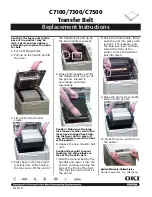
Product description
20
© SICK AG · Division Auto Ident · Germany · Subject to change without notice
8013796/UL20/2010-09-27
Operating Instructions
Laser Measurement Systems of the LMS500 Product Family
Chapter
3
The majority of surfaces reflect the laser beam diffusely in all directions.
The reflection of the laser beam will vary as a function of the surface structure and colour.
Light surfaces reflect the laser beam better than dark surfaces and can be detected by the
LMS over larger distances. Brilliant white plaster reflects approx. 100% of the incident light,
black foam rubber approx. 2.4%. On very rough surfaces, part of the energy is lost due to
shading. The scanning range of the LMS will be reduced as a result.
Fig. 6:
Reflection angle
The reflection angle is the same as the angle of incidence. If the laser beam is incident
perpendicularly on a surface, the energy is optimally reflected (
). If the
beam is incident at an angle, a corresponding energy and scanning range loss is incurred
(
Fig. 7:
Degree of reflection
If the reflected energy returned is over 100% (basis: Kodak standard) the incident beam is
not reflected diffusely in all directions, but is reflected in a specific direction. As a result a
large portion of the energy emitted can be received by the laser distance measurement
device. Plastic reflectors (“cats’ eyes”), reflective tape and triple prisms have these
properties.
Fig. 8:
Mirror surfaces
At mirror surfaces the laser beam is almost entirely deflected (
).
Содержание LMS500-20000 PRO Indoor
Страница 1: ... ...















































